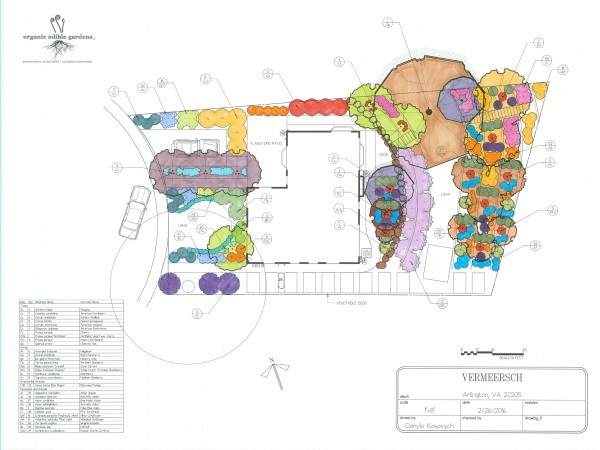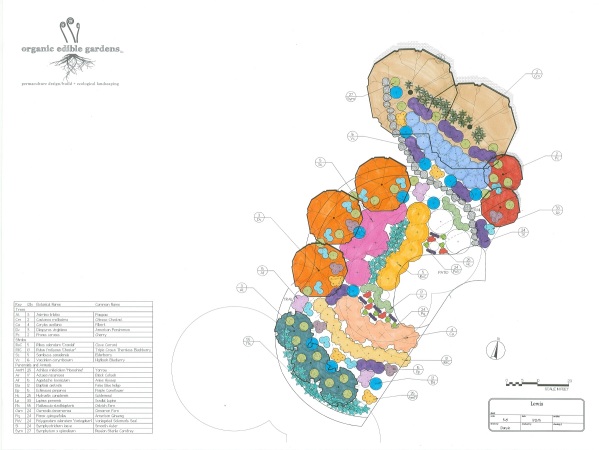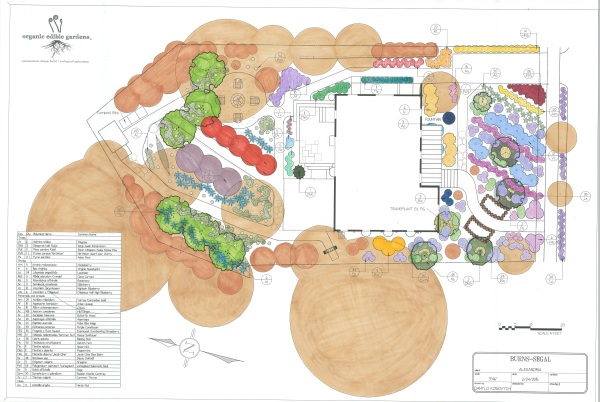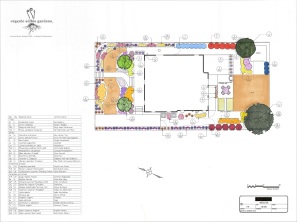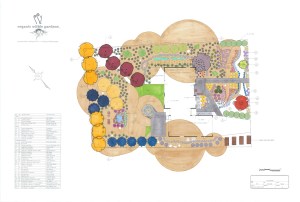
What no lawn? Yes! This landscape design for a client in Arlington is full of native and edible plants instead of a lawn!
The front contains a large vegetable garden surrounded by two layers of 4′ deer fencing with asparagus in between and native meadow plants as a backdrop.
Flagstone steps take you to a terraced plateau filled with Asian pears, blueberries, persimmons, sour cherries, cornelian dogwoods, a fig and a plethora of native flowers that attract beneficial insects.
The shady back slope is held together by serviceberries, paw paws, hazelnuts, elderberries, fragrant sumac and various native ground covers and spreading perennials.
Viburnums, wax myrtles, and a few hollies surround the property to provide privacy and bird habitat.
A couple of black gum trees (Nyssa sylvatica) provide shade for an open forest floor of edible ostrich fern and other woodland natives.

